#history of punjabi cinema
Text

Punjabi music has a rich and diverse history that reflects the cultural vibrancy of the Punjab region. From its folk origins and classical influences to the modern-day fusion of styles, Punjabi music continues to evolve while maintaining its distinct identity. Whether through the beats of Bhangra or the soulful strains of Sufi songs, Punjabi music remains a powerful expression of the region's cultural heritage and an enduring source of joy and inspiration for millions around the world.
#punjabi music#punjabi songs#new punjabi song#latest punjabi songs#punjabi song#new punjabi songs#latest punjabi songs 2021#new punjabi song 2021#punjabi music industry#punjabi#latest punjabi song#history of punjabi cinema#history of punjab#history of punjabi industry#new punjabi song 2022#top 10 biggest hits of punjabi music#story of punjab#punjab#latest punjabi song 2021#latest punjabi song 2022#new song story of punjab#story of punjab new song
0 notes
Text
Gulf migration is not just a major phenomenon in Kerala; north Indian states also see massive migration to the Gulf. Uttar Pradesh and Bihar accounted for the biggest share (30% and 15%) of all Indian workers migrating to GCC1 countries in 2016-17 (Khan 2023)—a trend which continues today. Remittances from the Gulf have brought about significant growth in Bihar’s economy (Khan 2023)—as part of a migrant’s family, I have observed a tangible shift in the quality of life, education, houses, and so on, in Siwan. In Bihar, three districts—Siwan, Gopalganj, and Chapra—send the majority of Gulf migrants from the state, mostly for manual labor (Khan 2023). Bihar also sees internal migration of daily wagers to Delhi, Bombay, and other parts of India. Gulf migration from India’s northern regions, like elsewhere in India, began after the oil boom in the 1970s. Before this time, migration was limited to a few places such as Assam, Calcutta, Bokaro, and Barauni—my own grandfather worked in the Bokaro steel factory.
Despite the role of Gulf migration and internal migration in north Indian regions, we see a representational void in popular culture. Bollywood films on migration largely use rural settings, focussing on people who work in the USA, Europe, or Canada. The narratives centre these migrants’ love for the land and use dialogue such as ‘mitti ki khusbu‘ (fragrance of homeland). Few Bollywood films, like Dor and Silvat, portray internal migration and Gulf migration. While Bollywood films frequently centre diasporic experiences such as Gujaratis in the USA and Punjabis in Canada, they fail in portraying Bihari migrants, be they indentured labourers in the diaspora, daily wagers in Bengal, or Gulf migrants. The regional Bhojpuri film industry fares no better in this regard. ‘A good chunk of the budget is spent on songs since Bhojpuri songs have an even larger viewership that goes beyond the Bhojpuri-speaking public’, notes Ahmed (2022), marking a context where there is little purchase for Gulf migration to be used as a reference to narrate human stories of longing, sacrifice, and family.
One reason for this biased representation of migration is that we see ‘migration’ as a monolith. In academic discourse, too, migration is often depicted as a commonplace phenomenon, but I believe it is crucial to make nuanced distinctions in the usage of the terms ‘migration’ and ‘migrant’. The term ‘migration’ is a broad umbrella term that may oversimplify the diverse experiences within this category. My specific concern is about Gulf migrants, as their migration often occurs under challenging circumstances. For individuals from my region, heading to the Gulf is typically a last resort. This kind of migration leads to many difficulties, especially when it distances migrants from their family for much of their lifetime. The term ‘migration’, therefore, inadequately captures the profound differences between, for instance, migrating to the USA for educational purposes and migrating to the Gulf for labour jobs. Bihar has a rich history of migration, dating back to the era of indentured labor known as girmitiya. Following the abolition of slavery in 1883, colonial powers engaged in the recruitment of laborers for their other colonies through agreements (Jha 2019). Girmitiya distinguishes itself from the migration. People who are going to the Arabian Gulf as blue-collar labourers are also called ‘Gulf migrants’—a term that erases how their conditions are very close to slavery. This is why, as a son who rarely saw his father, I prefer to call myself a ‘victim of migration’ rather than just a ‘part of migration’. It is this sense of victimhood and lack of control over one’s life that I saw missing in Bollywood and Bhojpuri cinema.
— Watching 'Malabari Films' in Bihar: Gulf Migration and Transregional Connections
#bhojpuri indentured history#malayalam cinema#bihari labour migration#gulf migrant labour#malayali labour migration#bollywood cinema#bhojpuri cinema#nehal ahmed
21 notes
·
View notes
Text



Pakistani cinema made history last year when Joyland (2022), written and directed by Saim Sadiq, became the first Pakistani film to premiere at the 2022 Cannes Film Festival, receiving a standing ovation and international acclaim. During its festival circuit, Joyland received several prizes and was shortlisted for the Academy Awards but was banned in its home country. Despite previous clearances from federal and provincial censorship boards, distribution of the Punjabi-language film was halted by the Pakistani government last November as the film consisted of “highly objectionable material” including scenes of LGBTQ+ intimacy.
While Pakistan’s Federal Censor Board quickly reversed the nationwide ban three days later with “minor cuts” to the film’s more controversial scenes after immense criticism for censorship on social media, the Punjab Censor Board ultimately prohibited the film from being screened in the province of Punjab, where the film is set and filmed.
Now, New Yorkers can watch the contested film at Manhattan’s Film Forum theater.
79 notes
·
View notes
Text
Mississippi Masala: The Ocean of Comings and Goings
By Bilal Qureshi
MAY 25, 2022
often remark that my Punjabi parents immigrated to the American South woefully unaware that they’d brought us to a place with an incurable preexisting condition. Racism doesn’t belong exclusively to the South—the former Confederacy—but it was implemented at industrial scale across the region’s economic, political, and cultural life. Alongside this landscape’s sublime natural beauty—rivers, fields, and bayous—sits the history of America’s unsparing brutality against its Black citizens. On the other side of the world, in South Asia, as well as among its global diasporas, anti-Blackness is embedded in ideas of colorism and caste, in tribal imaginaries and policed lines of “suitable” marriages.
The possibility to live—and to love—across racial borders is the theme of Mira Nair’s extraordinarily prescient and sexy second feature film, Mississippi Masala (1991). Three decades later, it speaks to a new generation as groundbreaking filmic heritage—but also with an almost eerie, prophetic wisdom for how to live beyond the confinements of identity and color. Even by today’s standards, the film is a radical triumph of cinematic representation, centering as it does Black and Brown filmmaking, acting, and storytelling. It is also a genre-defying outlier that would likely be as difficult to get financed and produced today as it was then. Part comedy, part drama, rooted in memoir and colonial history, the film that Nair imagined was a low-budget independent one with global settings and ambitions. The notion of representation—perhaps more accurately described as a correction of earlier misrepresentations—wasn’t its point or its currency. Race was its very subject. Nair has said she wanted to confront the “hierarchy of color” in America, India, and East Africa with the film—the kinds of limitations that she had experienced firsthand by living, studying (first sociology, then film), and making documentaries in both India and the United States. In a shift that began with her first feature film, Salaam Bombay! (1988), Nair set out to transform those real-world issues into fictionalized worlds, translating her sociological observations into works suffused with beauty, music, and, in the case of Mississippi Masala, humid sensuality.

Nair first engaged with the questions at the heart of the film when she came to the United States from India to study at Harvard in the mid-1970s. As a new arrival to the country’s color line, she has recalled, both its Black and white communities were accessible to her, and yet she belonged to neither. The experience of being outside that specific American binary would be a formative and fertile site of dislocation for the young filmmaker. Nair trained in documentary under the mentorship of D. A. Pennebaker, among others, and her first films were immersive explorations of questions that haunted her own life. The pangs of exile and homesickness for lost motherlands became the foundation of So Far from India (1983), and the boundaries of “respectability” for women in Indian society the subject of India Cabaret (1985). Salaam Bombay!—made in collaboration with her fellow Indian-born classmate, the photographer and screenwriter Sooni Taraporevala—carried her Direct Cinema training to extraordinary new heights. Working, from a script by Taraporevala, with nonactors on location in the streets of Mumbai, Nair found a filmic language that could merge the rigor of realism with the haunting emotion of fiction. It would become the creative model for Nair and Taraporevala’s translation of the real-life phenomenon of Indian-owned motels in the American South into a spicy cinematic blend of migration, rebellion, and romance.
During research trips across Mississippi, Louisiana, and South Carolina that Nair made in 1989, she discovered that many of the Indian motel owners in the South had come to the United States from Uganda following their expulsion by President Idi Amin in 1972. Ten years after the East African country gained its independence from British rule, Amin had blamed his country’s economic woes on its privileged and financially successful South Asian community. In the racial politics of empire, the British had privileged the Indian workers they had imported to East Africa, creating racial hierarchies Amin now wanted to destroy by way of politicizing race anew. In a line that is repeated in the screenplay, the mission was “Africa for Africans,” and for tens of thousands of Asian families, it was an uprooting and dislocation from which some would never recover.
In Mississippi Masala, the classically trained British Indian actor Roshan Seth plays Jay, the immigrant father who is the focal point of the “past” of the film’s dual narrative, which is beautifully balanced in the way that it interweaves the perspectives of two generations. In the film’s harrowing overture, Jay—along with his wife, Kinnu (Sharmila Tagore), and their daughter, Mina (Sarita Choudhury)—is being forced to flee Kampala, and he laments that it will always be the only home he has known. With stoic reserve, holding back tears, Seth conveys the gravity of the loss, as the camera captures the lush beauty of the family’s garden and the faces of those they must leave behind. Throughout the film, as Kinnu, Tagore—an acclaimed Indian film star and frequent Satyajit Ray collaborator—is a composed counterpoint to Seth’s troubled Jay in her character’s strength and resilience. When the film picks up with the family two decades later, Kinnu is shown managing the family’s liquor store, while an aging Jay writes to petition Uganda’s new government to reclaim his lost property. Nair’s camera pans up from his writing desk to reveal through his window the parking lot of a roadside Mississippi motel. This is where Jay works and exists in a permanent state of nostalgia, until he is jolted awake by Mina’s demands for a home and a life of her own.
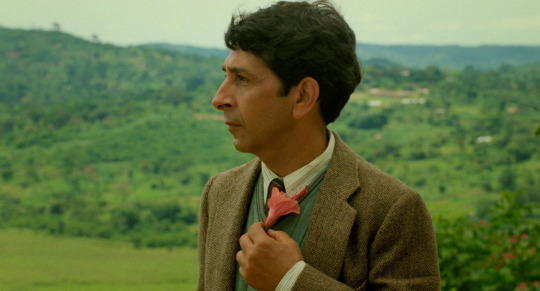
Even as Jay dreams in sepia-toned memories, the film itself never descends into saccharine longing or scored sentimentality. The rigor of the research and on-location filmmaking in both Mississippi and Kampala is reflected in an unvarnished and immersive visual style. While Nair herself clearly understood the fabric of the lives of the Gujarati Hindu families she was portraying, she has discussed how Denzel Washington became a critical collaborator in ensuring that southern Black life was rendered with equal attention to detail, cultural specificity, and dignity. The result is a film whose homes and communities are etched with a palpable sense of reality.
All of Mississippi Masala’s disparate threads are bound together by a distinctly sultry southern love story, which naturally remains the best-remembered feature of the film. The meet-cute of Mina and Washington’s character, Demetrius, is quite literally a traffic collision, a not-so-subtle suggestion that, without a bit of movie magic and melodrama, these two southerners might never have been maneuvered into the exchanged numbers and glances, and palpable wanting, that still burn the screen today. The film is fueled by the gorgeousness and megawatt charisma of both its stars, the young Washington paired with Choudhury in a prodigious debut as a woman at the edge of adulthood—her mane of wavy hair, their sweaty night of dancing to Keith Sweat, aimless late-night phone calls, dark skin in white bedsheets, secret meetings, consummated desires.
In the background of the R&B song of young, electric love are the film’s quieter, deeper notes on migration. A string leitmotif by the classical Indian violinist L. Subramaniam recurs whenever the vistas of Lake Victoria across the family’s lost garden in Kampala appear on-screen in brief flashbacks. Nair’s mastery with music has only deepened with time, resulting in films that integrate archival and original music with a free-form alertness that is distinctly her own. Both for the African American people living amid strip malls in the dilapidated neighborhoods of a region to which their ancestors were brought by bondage, and for the Indian families forced by Amin to flee their homes, exile is expressed in stereo. As Jay pines for the country he lost, Demetrius’s brother dreams of visiting Africa and saluting Nelson Mandela—disparate but recognizable longings and family histories shared over a southern barbecue, American bridges.

There wouldn’t be racial borders, however, if they weren’t policed, and the policing authorities here come from across the racial spectrum. When Mina and Demetrius’s relationship is discovered by nosy Indian uncles, those boundaries flare up. From the Black ex-girlfriend who asks why the good Black men can’t date Black women, to the Indian uncles who barge into Demetrius and Mina’s hotel room, to the gossiping aunties who during phone calls mock Mina’s rebellious scandal, there is a veritable chorus of condemnation. It is portrayed with great comedic timing and wit, including from Nair herself, who delivers some of the sharpest lines of disapproval in the role of “Gossip 1.” But the implications of those judgments remain unfunny by design. The film’s remarkable achievement is the way it never buckles under the thematic weight of these uncomfortable truths. Nair always delivers her cerebral punches with a lightness and warmth that are precisely calibrated. These are the markers of a filmmaker in full control of the tone, color, production design, and, always, music to accompany the emotional demands of her material, and that facility has only gotten sharper in such masterpieces as Monsoon Wedding (2001).
Mississippi Masala showed at festivals in late 1991 and was released commercially in American cinemas in February 1992, within weeks of Wayne’s World and Basic Instinct. Working outside Hollywood’s conventions, Nair joined an extraordinary flowering in independent filmmaking that continues to be celebrated. The year 1991 had been a landmark one for Black cinema already, with the release of Julie Dash’s Daughters of the Dust, Mario Van Peebles’s New Jack City, and John Singleton’s Boyz n the Hood. Spike Lee’s opus Malcolm X, with Washington in the title role, would be released in the U.S. in late 1992. Nair’s film was shown at the same 1992 Sundance Film Festival at which a landmark panel about LGBTQ representation heralded a movement, named New Queer Cinema by moderator B. Ruby Rich, devoted to reclaiming stories of love and suffering from Hollywood’s gaze. These were parallel currents that echoed larger shifts and openings happening in global culture. The collapse of the Soviet Union, the end of apartheid in South Africa, India’s economic liberalization, and the rise of a youthful southern Democrat in the U.S. following a decade of Republican rule were stirrings of a new order. The possibilities were being felt all over the world as Nair’s film of southern futures arrived.
Described by the New York Times at the time as “sweetly pungent” and by the Washington Post as a “savory multiracial stew,” Mississippi Masala opened in American cinemas to rave, if exoticizing, reviews, less than a decade after Richard Attenborough’s Gandhi and Steven Spielberg’s portrayal of Indian characters eating monkey brains during a ritual dinner in Indiana Jones and the Temple of Doom. Realistic international cinema featuring everyday South Asian life—as opposed to the Indian musical tradition or Hollywood’s tropes about foreignness—had almost no precedents or peers at the time. The depiction of South Asian characters as ordinary working-class Americans navigating questions of family, money, and love remains a radical achievement. Mississippi Masala also manages to decenter whiteness altogether. In a film about racial hierarchies, white characters appear only in the background, as the motel guests, patrons, and shopkeepers of Greenwood society. By design, this is first and foremost a film about Mina and Demetrius, and the families and communities that formed them.
Despite all the extraordinary accomplishments in the streaming age by the current generation of filmmakers of color, Mississippi Masala’s layered portrayal of race and love still feels unparalleled. To hear its characters speak candidly about the real lines that divide them, and reflect on the costs of crossing those lines, is to recognize the rigorous thinking—and living—that informed the screenplay. Even more disappointing than the lack of contemporary equals to the film, perhaps, are the offscreen parallels in South Asian communities like my own, where colorism and anti-Blackness are stubborn traditions yet to be fully dismantled. Stories of interracial love are still rarely told on-screen, and these relationships—the masala mixes—are still not visible enough to become as normalized as they deserve to be.

One of Nair’s first films, So Far from India, was filmed between New York City and Gujarat. It opens with a folk musician in the streets of Ahmedabad, a sequence that serves as a prelude to the film, about an Indian immigrant and the wife he has left behind. Nair, as narrator, translates his singing about the ocean of comings and goings. With Mississippi Masala, Nair positioned herself as both a great chronicler and a great navigator of that vast ocean of comings and goings. America is one of Nair’s homes, and she has made several films about the immigrant experience there, including her adaptations of Jhumpa Lahiri’s The Namesake (2006) and Mohsin Hamid’s The Reluctant Fundamentalist (2012). Each has sought to look at the country through the eyes of those usually on the margins in order to dramatize and problematize the idea of the American dream. It is these poetic and cinematic ruminations on identities in flux that feel like her most enduring, almost personal, gifts to hyphenated viewers like myself.
When I was younger, I thought Mississippi Masala embodied Mina’s rebellion, the promise of independence, and the freedom to choose whom and how to love. But now, twenty years after I first saw the film, at university, Jay’s longing for home and his incurable displacement feel equally, achingly resonant. With the limitations of America laid bare by the gift of adulthood, migration is no longer only a hurtling forward toward the rush of freedoms; it is now also the unknowable costs borne by my parents, the homes and selves they left behind.
The film’s closing credits, braiding Jay’s return to Kampala with glimpses of Mina and Demetrius kissing in the warmth of the southern sun, capture Nair’s exquisite feat of balancing—and blending—in Mississippi Masala. For a film traversing so many geographies and registers, there is finally a seamless harmony between father and daughter, between tradition and future, between here and there. As seen anew in restored colors, Mississippi Masala endures not for its spicy and pungent aromas of cultural specificity or representational breakthrough but for this profound commitment to multiplicity. It is a timeless song for and to those who live—and love—in multitudes.

#Criterion Collection#Mississippi Masala#Mira Nair#Charles S. Dutton#Denzel Washington#Roshan Seth#Sarita Choudhury#Sharmila Tagore#Joe Seneca#Bilal Qureshi
1 note
·
View note
Text
The Significance of English to Punjabi Translation
Introduction:
In our interconnected world, where communication knows no borders, the importance of language translation cannot be overstated. One such linguistic bridge that plays a pivotal role in fostering cross-cultural understanding is the translation from English to Punjabi. As we delve into the nuances of this linguistic transformation, we uncover the rich tapestry of history, culture, and the increasing demand for accurate and effective translation solutions.
The Historical Tapestry:
Punjabi, a language with deep historical roots, is predominantly spoken in the Indian state of Punjab. With a rich cultural heritage, Punjabi is not only a language but also a symbol of identity for millions of people. The need for English to Punjabi translation arises from the historical ties between Punjab and the English-speaking world, particularly during the British colonial era.
During this period, English became a language of administration, education, and governance in the Indian subcontinent. As a result, English and Punjabi began to intersect, creating a need for accurate translation solutions. Today, this historical connection has evolved into a global demand for English to Punjabi translation, driven by the diaspora and the globalized nature of business, education, and communication.
Cultural Significance:
Language is a vehicle for culture, and Punjabi is no exception. From literature and poetry to music and cinema, the Punjabi language carries the essence of a vibrant and diverse culture. English to Punjabi translation becomes a conduit for preserving and sharing this cultural wealth with a wider audience.
In the realm of literature, the translation allows readers worldwide to explore the works of Punjabi authors, immersing themselves in the unique narratives, perspectives, and storytelling traditions. Similarly, the translation of Punjabi music and poetry opens doors to a world of emotions and expressions that transcend linguistic boundaries.
Economic and Business Landscape:
As globalization continues to blur the lines between nations, businesses are expanding their reach beyond borders. In this dynamic environment, effective communication is paramount, making English to Punjabi translation an essential tool for success. Whether it's marketing materials, legal documents, or business negotiations, accurate translation ensures that the intended message is conveyed with precision and cultural sensitivity.
The growing Punjabi diaspora, particularly in English-speaking countries, further amplifies the need for translation solutions. Businesses aiming to tap into this market must navigate linguistic and cultural differences, and a well-executed translation strategy becomes indispensable in this context.
Educational Imperatives:
Education is another sector where English to Punjabi translation plays a crucial role. As students from Punjab pursue academic opportunities in English-speaking countries, the demand for translated educational materials, certificates, and transcripts has surged. The accuracy of these translations is paramount, as it directly impacts the educational and professional prospects of individuals seeking to bridge the gap between their native language and English.
Conclusion:
In a world characterized by diversity and interconnectivity, the role of translation solutions cannot be understated. English to Punjabi translation serves as a bridge, connecting cultures, facilitating business transactions, preserving literature, and enabling educational pursuits. As we navigate the intricate web of linguistic diversity, the importance of accurate and culturally sensitive translation becomes increasingly evident, fostering a global community where communication knows no bounds.
Source: The Significance of English to Punjabi Translation
0 notes
Text

Happy Birthday Dara Singh: Remembering a Great Star
Dara Singh, a name synonymous with strength and versatility, began his career as a wrestler. His physical prowess and indomitable spirit led him to be revered in the world of wrestling, culminating in his posthumous induction into the WWE Hall of Fame in 2018.
In 1952, Singh made his foray into the film industry with the movie "Sangdil," marking the beginning of a prolific acting career. He gained immense popularity for his portrayal of Hanuman in the 1976 film "Bajrangbali" and the television series "Ramayan." His on-screen presence was commanding, bringing to life the characters of Indian mythology with a rare authenticity.
Dara Singh's partnership with actress Mumtaz in 16 Hindi films created a memorable chapter in Indian cinema. Together, they captivated audiences, becoming one of the most celebrated duos of their time.
Beyond the wrestling ring and the film set, Singh's influence extended to the political arena. His nomination to the Rajya Sabha, the upper house of India's Parliament, was a significant recognition of his contributions to the public sphere. It highlighted the respect and admiration he commanded across various fields.
As a director, Singh helmed several Punjabi and Hindi films, showcasing his artistic vision and creative prowess. His directorial ventures under the banner "Dara Film" were marked by their engaging storytelling and cultural relevance.
On this day, as we remember Dara Singh, we celebrate not just a wrestler or an actor, but a figure who embodied the spirit of perseverance and excellence. His life's journey from a rural background to national fame serves as an inspiration to countless individuals.
Dara Singh's legacy is not confined to his achievements in wrestling, cinema, or politics. It lies in the hearts of those he inspired, the paths he paved for future generations, and the indelible mark he left on Indian culture. On his birth anniversary, we pay homage to this towering figure, whose life story continues to motivate and resonate with millions.
Happy Birthday, Dara Singh. Your legacy continues to shine brightly in the annals of Indian history.
#PrithvirajKapoor and Dara Singh at the muhurat of the movie 'Shreemat Bhagwat.'
1 note
·
View note
Text
THE 36 MOST POPULAR ACTORS & ACTRESSES (COMBINED LIST) IN THE HISTORY OF I-N-D-I-A-N C-I-N-E-M-A !
(PART-1)
( NOTE: This calibrated/weighted list at different levels, in large part includes a slew of the most extraordinarily popular artists of regional cinema – ie Punjabi, Gujarati, Bengali & South Indian too (incl each regional cinema’s own reach), aside heartland Hindi Cinema !! )
.Rajesh Khanna - 4,000,000 popularity pts
.Prem Nazir – 1,430,000 pts
.Ashok Kumar – 490,000 pts
.Raaj Kumar – 293,000 pts
.Uttam Kumar – 170,000 pts
.Suchitra Sen – 129,000 pts
.Mala Sinha – 100,000 pts
.Rita Bhaduri – 90,000 pts
.Pradeep Kumar – 83,000 pts
.Kishore Kumar - 82,500 pts
.Shammi Kapoor – 82,300 pts
.Kanan Kaushal – 82,100 pts
.Asrani – 81,700 pts
.Biswajeet – 81,300 pts
.Master Bhagwan – 81,000 pts
.Mumtaz – 80,800 pts
.Master Vithal – 80,400 pts
.Rituparna Sengupta – 80,000 pts
.Dev Anand – 77,000 pts
.Sheela – 73,000 pts
.Waheeda Rehman – 72,000 pts
.M. G. Ramachandran – 69,000 pts
.Meena Kumari – 67,000 pts
.Anita Guha – 63,000 pts
.Rajinikanth – 56,000 pts
.N. T. Ramarao – 53,000 pts
.Sridevi – 50,000 pts
.Rati Agnihotri – 43,000 pts
.P.C. Barua – 41,000 pts
.Asha Parekh – 34,000 pts
.Jaya Prada – 20,000 pts
.Arvind Swamy – 10,450 pts
.Mehar Mittal – 4,400 pts
.Mohanlal – 3,670 pts
.Sudha Chopra – 3,280 pts
.Usha Chavan -2,800 pts
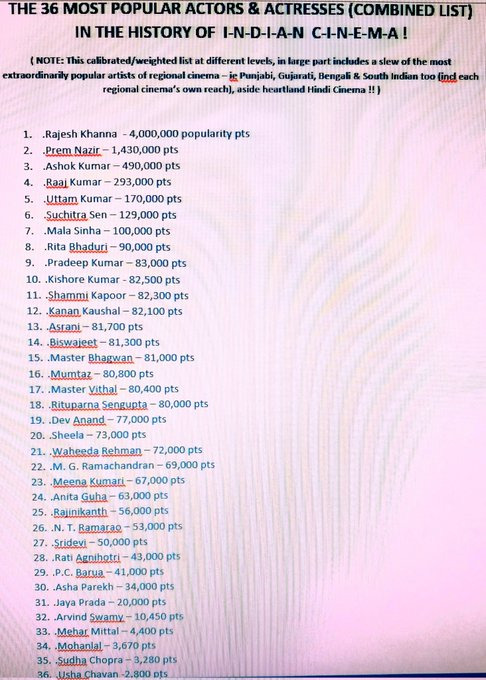




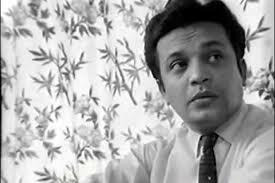
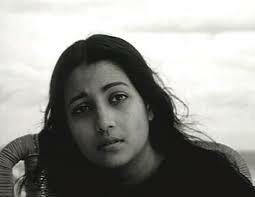

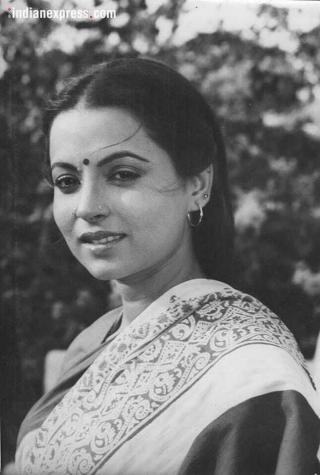


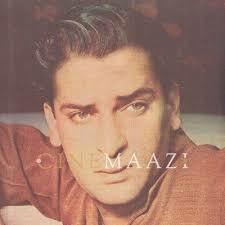
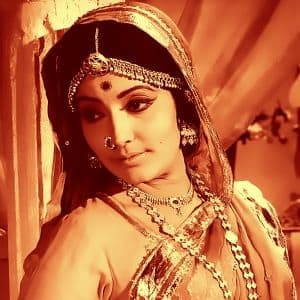










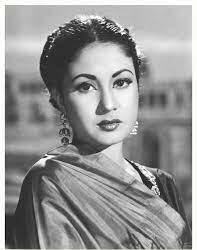


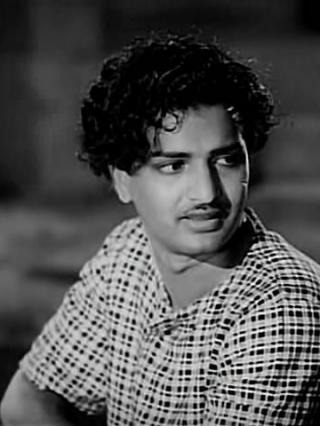



(Contd)
0 notes
Text
'Ishq Da Tara' song from Subedar Joginder Singh biopic launched in Times Square
The song ‘Ishq Da Tara’ from Param Vir Chakra winner Subedar Joginder Singh’s biopic rocked New York’s Times Square. This is the first time in the history of Punjabi cinema that a film number was performed in Times Square.

View On WordPress
0 notes
Text
Fairness and Tamil Girls>

A look at the Tamil screen shows that the heroines are fair-skinned. The cinema in Tamil Nadu is almost like a staple diet for the people and no wonder many stars have made a successful entry into politics as well. Jayalalitha was one such political- star. I have to make a point here that in a galaxy of heroines on the silver screen, I have yet to see a dark-skinned heroine. Even Jayalalitha, the star turned politician (sadly she is no more), is milky-white. These fair-complexioned stars contribute to a beauty culture in South India where skin-whitening creams outsell soft drinks. Yet the fact is that most Tamil and south Indian girls are dark-complexioned. I wonder why a dark-complexioned girl cannot strike out in the Tamil film industry.
==your eyes are too beautiful if you buy this product>>
One aspect that is overlooked is that in the ancient scriptures, epics, or folk tales in Tamil or for that matter in any Indian language, the good character is always portrayed as being fair in complexion. A beautiful princess is always without fail described as being fair and white as snow. This is a dangerous portrayal as it is suggesting that the fair are fair dealing and the dark-complexioned have evil intentions. This view has been expressed by Shyamala Bhatia, an associate professor in history at the Bharati College, University of Delhi.
==your eyes are too beautiful if you buy this product>>
If you add that the white race ruled India and their women were white then it becomes clear why the concept of fairness being superior is embedded deep within the Indian psyche.
But even after the white rulers went away, India's concepts of beauty have not changed. Thus milky-complexioned Tamil stars have led to a massive market for skin-lightening creams, and the notion that white means beautiful is all-pervading in South India. The word for fairness in Hindi is "GORI" and in Tamil, it is NÄemail. I am afraid it will not go from the South Indian psyche.
==your lips are too beautiful if you buy this product>>
I will close with a small anecdote. I had been called to give a guest lecture to students on the Law at Madras University. After the lecture, I expected to be asked questions about the legal aspects of the lecture. Unfortunately, all the girls surrounded me asked me what I did to keep my skin fair. I was nonplussed, as I don't do anything and am a Punjabi, albeit fair-skinned.
0 notes
Text
The Struggle of 83

*Image courtesy belongs to the owner. Copyright Infringement not intended.
*I haven't watched the movie so this is not the movie review.
*My observations on how the movie was presented.
83 is another ordinary movie that was released on 24 December 2021. People shockingly call it a disaster at box office. Because we expected a lot to happen over the milestone in India’s cricket history does not mean it has failed. I feel a 100 CR. box office is not the merit.
Making a movie on a historical event is not an easy sweep. It was ambitious of Kabir Khan to take up such a tough subject. It was exceptional of him to take actors from all over the country to seem more real. Rather a Punjabi trying to speak in a Tamil accent. A project where every cricketer was training their actor. Bringing them all together could be arduous. They have all invested their time to train an actor to play in their style. Imagine the pressure the actors lived under to look like someone and hit the chords with the audience. Such a movie, if expected to easily make in the 100 Cr club is I think a fair desire.
Of course they wanted a lot to happen over this world cup drama. But in my opinion it got pitched a little less. Kabir Khan’s iconic venture did not come across as appealing as Dhoni did. I have my observations why 83 could not do justice to the historic 1983 victory. It had all the potential to re-celebrate the win but it did not reach us. Let us start with the most general factors that affected the movie.
Covid - Which businesses and markets have escaped the virus? You name it and it’s covid-19. The waves continue to devastate. Cinema is always approached by choice and treated as a luxury. And luxury can be avoided if you wish too. The ones who deliberately kept away from theaters were for all the good reasons.
Vaccination - Because theaters are vulnerable medium to get the infection the fully vaccinated certificate is compulsory in the theaters and malls. And even if the number is highly appreciable of vaccinated individuals in India there is a big chunk of the country which is still pending with 2nd dose. They by default can’t even go close to the theaters. So the bravehearts who really wanted to watch were mandatorily protected under the unpredictable virus guidelines.
Money mindedness - After the lockdown drama a bigger part of society is struggling to meet it’s both ends. A middle class family which has dealt the lockdown with or without pay cuts has suddenly witnessed uncertainty. The fact that this world can be locked inside with minimum resources is still being absorbed. Yet most of us lived peacefully with wholesome meals. This Pandemic made us realize some expenditures can wait. Movies will keep coming.
OTT habit - Pandemic reintroduced us to the OTT platform. Even the digitally illiterate bunch of people started enjoying the web series and subscribing more. Very soon the industry identified it as an easy way to reach their audience when the doors of the cinemas are closed. Why not lay the red carpet digitally instead of waiting and delaying the release? Hence we are all waiting for 83’s grand premiere on OTT. It will one day. But I think looking at the glory of the movie’s subject, if it was made for all, the movie should have been released for all taking in consideration the current behaviour of the viewing audience. OTT! It could have been a bigger deal.
People have come this far to understand that an unnecessary cost of movie tickets and popcorn can be replaced with sitting at home and enjoying entertainment at their own pace. Life is always bigger than any leisure.
Perhaps, the other movies that were released like ‘Pushpa’ and ‘Spider-Man: No Way Home’ around the same time have seen a huge success keeping all the above factors in mind. The reasons that the critics and the analyst chalk out that it is a documentary or some typical classes and masses formula, sound completely pseudo. Cricket is for all. You do not see a class and mass in any sport. It’s a matter of following. And Cricket has a huge fan following. The first world cup that India won under Kapil Dev’s captaincy may not have that bigger fan following like one under MS Dhoni’s captaincy but India knows about it. If we still rule out the possibility that people are not very much aware of the 1983 days, are they not even aware of who Kapil Dev, Sunil Gavaskar, Sidhu, etc are to watch a movie made on this victorious team? Certainly something went wrong in such an advanced age, technologically backed, strong social media presence, reels and stories on all platforms, whatsapp to make even a picture viral, twitter with trending hashtags etc. Why could the movie based in 1983 not make its mark in 2021? Now let us talk like the critic?
How was the movie portrayed to a common man?
I had a very strong intuition that this will not see the success like ‘M.S. Dhoni: The Untold Story’.
Who Played Whom? - You had to tap on the curiosity of the audience about who is playing Sidhu and who is Kirmani. It was not just a Sports Docu-drama. It was a movie that included a lot of cricketers and support staff. It was a team of 20+ actors and we don’t know who played whom. What does a common man look for when a movie is made on true events or some eminent personalities? Who is playing those roles? Let’s face it that all the actors were not popular faces. The director definitely had to choose a smart way. He could probably piggy bank on the cricketer’s fame.
If Jiiva was not a big name for all in India, Srikanth was. If Dinker Sharma was not well known we definitely knew Kirti Azad. They just did not publicise big names like Sunil Gavaskar and Ravi Shastri who are widely regarded. Even today I had to wikipedia the names. A name like Neena Gupta who is also in the movie lost nowhere. They just did not flaunt that starcast to the world to see. They did make an instagram page and posted a lot of pictures but did not pictorially bombard you with relevance like it happens nowadays. Why couldn’t a simple picture with the real and reel gavaskar in that stance go up? They should have introduced you way earlier to all the players through Social media. A lot of youtube channels have put up those videos. They expected just a pic of handsome Nishat Dahiya whom most of us don’t know could tell the world he is Roger Binny. No! Social Media is not so bothered. It has a strong scrolling behaviour. If you still scroll down that insta page you will see Happy Birthday posts in numbers. No praiseworthy content.
Trailer - The very first impression of any piece of work. While watching the trailer closely I saw less of the 83 journey and more of Kapil Dev in 83 world cup. Nothing wrong. Kapil Dev as captain deserved that honour. But to be really honest it wasn’t Kapil Dev you were seeing, it was Ranveer Singh who was given all the spotlight. Did we require Deepika in the trailer? Once may be! We required more moments from the matches to excite us. We required names next to the glimpses of each actor playing a player's role in the movie which the trailer literally just ran through. Remember who plays whom? The trailer, if noticed, is crafted beautifully. But you fail to understand who is speaking to Kapil Dev. When the names actually appear it is namesake as you hardly identify the actor and it becomes difficult to connect the dots at the very end of the entire trailer. But we identified Deepika Padukone playing Ranveer Singh’s wife in the movie. It was her familiarity that stood out. This is why exactly they could just avoid her presence to make others evident in the trailer.
I understand a 3 minute A/V cannot give you a lot of scope. But we have seen movies having 2-3 trailers to hit your brain. This movie needed that strategy. A theme or mood for each trailer. It shouted a teaser for each character. If the team has released it I haven’t come across any.
Ranveer Singh - You know when people identify you with the real personality in the movies that are biographies or biopics? When both share some of the similar traits. No individual is similar. But there is a certain trait that is very close to the real. Why did we accept Sushant Singh Rajput as Mahendra Singh Dhoni? Because they both share a characteristic of being cool, calm and shy boys. Having said that, Sushant remained to be Sushant while being Dhoni on the outside when filming and promoting the movie. He acted well to maintain that image of Dhoni off camera. Ranveer Singh forgot to maintain that identity of a shy gentleman, Kapil Dev. Ranveer Singh overpowered the man himself who had a stronger identity than him as the movie was about him and his boys. While promoting the movie Ranveer jumped, danced and continued with all his silly acts that he always does. And Ranveer Singh being Ranveer will continue doing that. He has his own energy which he cannot handle himself. He was expected to be Kapil Dev and he couldn’t stick to it off the field. It isn’t just physically that an actor needs to match but also behavior and mannerisms.
Promotions - The only time you get to market and sell. How do you promote the film which is based on somebody? Definitely you cannot ask for their time to accompany you everywhere you appear. So what do you do? Send Ranveer and Deepika at Bhurj Kalifa and show their romance from Dubai? How irrelevant! Even if the UAE was giving you that honour I think a Deepveer moment was not important. What were you really promoting? A movie on 83’s world Cup win, Ranveer-Deepika romance or see how I made a multi-starrer and exhibited none? It is actually questionable. Why couldn’t the team promote the rest of the familiar actors. You had a minimum of 11 actors to promote. You had Saqib Saleem who is a well known name along with Hardy Sandhu, Amy Virk, Sahil Khattar. Hardy Sandhu just gave a hit number of his own ‘Bijlee’ before the release. They have their own fan following if not the one like Ranveer and Deepika. Why weren't they used to promote? Didn’t Khan want all the players to get equal exposure for their effort in the world cup matches? Adinath Kothare, I know him because he is a big name in the Marathi Industry. Even he wasn’t seen on Marathi TV channels. There was a father-son duo from Maharashtra where the son played his own father’s part, Sandeep and Chirag Patil but people hardly spoke about it. Jatin Sarna, made it big with Sacred Games. Where is he? Pankaj Tripathi got accolades from everywhere when the trailer released for his work. But even this actor was kept away from the engagements.
The team did not go the traditional way. Neither did they target digitally. I do not remember watching 83 on television the way it should have been. The PR and marketing was so stereotypical is what you get to see when you analyze the 83 promotions. I think this movie needed special treatment with a better promotion plan. You had actors from various states. Had they reached at least those states they would have succeeded a bit more. I assume there was a day dedicated where both reel and real stars shot with various media houses. It’s all over the internet with the same setup when I tried to search for interviews. However how many of us actually go to youtube and search for such content nowadays? We love our feeds. We pour our hearts on even Taimur going to school if it comes up or some random girl doing a hook step. That should have been taken into consideration. Small snippets of what streamed as a 30 min or 60 min episode would have potential to influence. People like to watch 2-3 minute videos. Whatsapp is equally powerful as Instagram. And you have to take that benefit. Its shareable content that the creators look for. That Balvinder Sandhu and Kapil dev conversation is so much watched from the press conference.
Every team should research before promotions. It is not always innovation that creates history. Sometimes you go with the herd. A promotion is the last chance to sell even a withered leaf.
They could strategically create series of posts and stories and throw them to the world. Trivia, BTS, bloopers can never fail you. Trainig sessions from the production stage, for example, post release is still a win win to keep the movie fresh and running. Reviews and appreciation from the industry and cricketers will never be a medal. Bollywood should understand this soon.
When Kapil Sharma invited the 83 heroes on his show around 2 years ago, the episode was a bigger hit than the movie. Just the real heroes and their stories kept us intrigued. It was a lack of engagement that this movie could not impress us to come to the theaters and enjoy.
It just came out as another ordinary movie. I will call it a theatrical disaster. OTT is still a ray of hope and they should come back and release with a bang.
At the end all I saw was Allu Arjun won over Ranveer Singh by all means! And he is also on OTT.
#kabir khan 83#83 movie#83 box office#ranveer singh 83#83 trailer#83 cast#ranveersingh#deepikapadukone#bollywood#kapil dev#cricket#sunil gavaskar#hindi movie#pankaj tripathi#cinema#neena gupta
5 notes
·
View notes
Text
The long wait for the next James Bond film is over for the franchise’s fans as No Time to Die, which will see Daniel Craig as 007 one last time, is set to release across theatres in India on September 30, Universal Pictures announced Wednesday.
The official handle of the @007 Twitter account posted the final international trailer of the movie and announced the release date.
No Time To Die, directed by Cary Joji Fukunaga, also stars several popular actors including Rami Malek as the villain Lucifer Safin, Lea Seydoux as Bond’s love interest – Dr. Madeleine Swann (from Spectre), Lashana Lynch as the new secret agent Nomi who takes over 007 after Bond retires, Ben Whishaw as the MI6 quartermaster Q and, Ralph Fiennes as MI6 chief M.
The final trailer portrays the cast in intense action sequences with the message, ‘Wait Is Over’.
No Time To Die will feature James Bond as he leaves active service. His peace is short-lived when Felix Leiter, an old friend from the CIA, turns up asking for help, leading Bond onto the trail of a mysterious villain armed with dangerous new technology
No Time to Die will release in English, Hindi, Kannada, Tamil, Telugu, Malayalam, Punjabi, Gujarati, Bhojpuri and Bengali later this month.
The film franchise, one of the longest running in cinema history, has a huge fan base in India.
Don't Miss These Stories
The first James Bond movie Dr No, starring Sean Connery as the fictional British spy who prefers his martinis ‘shaken, not stirred’, released in 1962.
No Time to Die is the 25th James Bond movie, which comes after a gap of six years. The last 007 movie in the franchise was 2015’s Spectre.
2 notes
·
View notes
Text
YuppTV Scope and its features
Online content consumption has become huge these days. Many OTT platforms have seen huge hike in the amount of paid subscriptions since the pandemic outbreak.
All thanks to the pandemic that people were all locked up in homes. Nothing was there for entertainment except the Television. This gave a chance for the OTT platforms to enter the space with the unique concept of originals.
There are a lot of OTT platforms existing before the pandemic. Some of the major platforms were Netflix, Amazon Prime, ZEE5, Voot, and many others. The problem arised when the subscription purchased is limited to one app only.
Multiple OTT Subscriptions and Multiple Logins???
If we purchase one OTT subscription then, we are allowed only to stream services from that app. This problem gave rise to a solution to amalgamate the major OTT providers in to a one single platform. This way, users an stream content from others apps too with just a single subscription.
If you are one suffering with this problem then, the below information will surely make you happy and let go off all your worries. You can watch all the latest and trending online content all at one single place.
Why pay more?? when you have all you wanted at a single place???
Excited to know the name of the OTT aggregator app????
Here you go....
YuppTV Scope, is an OTT aggregator app that combines all the major OTT platforms content in a single app. It has the leading content partners namely SonyLIV, Voot, ZEE5, YuppTV.
YuppTV, the parent company pioneer in online TV Channel addressed this issue and explored various problems. They have come up with an awesome solution that solves the user’s issue. YuppTV Scope, is all that the users crave for in case of infotainment with excellent user experience.

It also allows the users to stream the premium content across multiple OTT apps. This is a must have app on your device to access and enjoy content on any device, any where, and at any time.
The app has various features namely that serves best to the audiences. They are:
Live TV
Catch-up TV
TV Show premiers 24 hours before Television
News Telecast..., and many more to add.
YuppTV Scope has the best curated content across the OTT apps in 12+ languages, 100+ originals, 300+ Live channels, 500+ TV Shows, 8000+ Movies, and much more.
The channels list of YuppTV Scope is a collection of various languages. Those include the following.
1. Tamil
2. Telugu
3. Hindi
4. English
5. Bengali
6. Kannada
7. Oriya
8. Punjabi
9. Bhojpuri
10.Marathi
11. Gujarati
12. Malayalam
Users can also choose their preferred language to stream their preferred content. Users also get the personalized content recommendations based on their watch list.
It also has content recommendations based on the users interests and previous watch history.
This app is accessible on all devices and has extremely supreme video streaming quality. This app has all the features that satisfies all your content cravings.
Users can have “Unlimited Entertainment with single Subscription”.
Download the app to enjoy all the selected range of premium content with YuppTV Scope
How to Download YuppTV Scope app?
Users can easily subscribe to YuppTV Scope app by following these simple steps.
Subscribe to YuppTV Scope Cinema Plus Pack via BSNL portal from here
After successful purchase, you will receive an SMS confirmation on your registered mobile number (RMN)
Download and install YuppTV Scope app on the device of your choice. Please refer to the supported devices here
Sign in with your registered mobile number (RMN) using OTP validation
Enjoy wide range of aggregated content from YuppTV, ZEE5, SonyLIV & Voot
You can watch Live TV channels, that are powered by YuppTV, on YuppTV Scope app itself.
Refer to this video for your reference
youtube
Stream all the premium range content across multiple apps with YuppTV Scope. Grab your subscription right now to sit back and relax.
#yupptvscope#zee5#voot#sonyliv#yupptv#movies#tv series#webseries#tvshows#india news#news#series#kids#onlinecontent#contentstreaming
1 note
·
View note
Text
The next stage of outsourcing to India – Marketing & CMO function
India is a HUGE country. Here are a few comparisons with European Union, just to the get a perspective-
In terms of total area the EU spreads across 4.32 million sq km, while India spreads across 3.29 million sq km.
The area irrigated land in EU consists of 131,250 sq km, while in India it comprises of 663,340 sq km (5 times more than EU).
When is comes to Primary Education Pupils EU stands at 27.79 million and India at 137.75 million.
Daily newspapers per 1000 for EU stands at 203.43 and for India, 70.94. Mobile Phone per 1000 in EU 937.5 and India at 555.73.
Composition of Self-employed professionals in EU 20.24% when compared with that of India 80.6% (4 times more than EU).
GDP of the EU stands at $16.63 trillion and that of India $1.84 trillion. The EU's and India's Economic growth (per capita) stands at (-4.59) and 6.22 respectively.
The Languages spoken in EU are Czech, Danish, Dutch, English, Estonian, Finnish, French, Gaelic, German, Greek, Hungarian, Italian, Latvian, Lithuanian, Maltese, Polish, Portuguese, Romanian, Slovak, Slovene, Spanish, Swedish. The languages spoken in India - Hindi 41%, Bengali 8.1%, Telugu 7.2%, Marathi 7%, Tamil 5.9%, Urdu 5%, Gujarati 4.5%, Kannada 3.7%, Malayalam 3.2%, Oriya 3.2%, Punjabi 2.8%, Assamese 1.3%, Maithili 1.2%, other 5.9%. English enjoys associate status but is the most important language for national, political, and commercial communication.
Now some statistics closer to the topic. Following are the comparative figures about of Advertising spend: (Source: https://www.statista.com/)
European Union-106 billion $ (FY: 2019) and India -160 billion Indian rupees (FY: 2019)
The point to be made with these stat’s is that India a single country has the potential and the talent to out shine twenty-seven countries together.
The statistics prove the hugeness of India. India is a favoured off shore destination.This should not be surprising for many reasons:
Vast Pool of Professionals
Being the second most populated country, India has a huge pool of young and talented professionals. The abundance and easy availability of skills allows delivery of solutions on time and with required quality. As per shiksha.com there are 4459 MBA colleges across India.
Budget Friendly
Cost is the most decisive factor in for deciding to outsource to India.
High Quality Standards
Indian companies have geared up and adapted the relevant global quality standards
Ease of communication
India is the second-largest English-speaking country in the world after the US (~ 350 million people can communicate in in English)
Indian outsourcing has already been experienced by the software and BPO sector. Global leaders in IT the sector have set up shop in India. But, its time to expand the outsourcing horizon a bit more.
Digital Marketing services are strong contender to be outsourced.
An opposition to the idea could be – for marketing to succeed it’s important to know the local pulse of the target market. But with the world getting flatter with the ever-evolving communication channels, this is no more a concern. The recent example of #blacklivesmatter issue, is a good example to understand that a pulse can be understood in every corner of the world.
So, there should not be an issue in outsourcing the CMO?
A CMO, Chief marketing office or officer, is the function which manages the marketing and communications function of an organisation. A function that requires the ability to strategize, develop and execute. A CMO is the creative, strategic and execute force behind a brand and its values.
There are multiple advantages to Outsourcing the CMO:
Get a fresh perspective
Scale efforts fast
Reduced overheads
Empower emerging technology
Focus more on the ‘Why’ and less on the ‘What’
Advertising is very much a part of Indian psyche. Indians know very well about how to highlight the good points and strategically hide the poor points. With an inborn respect for arts and artistry; art directors can be eloquent. 1500 years history of drama, more than 100 years of cinema- Indians know what content and copy writing very well. And most of all a culture of bonding and caring, allows collaborative effort in delivering projects.
Today Digital marketing has dug deep into the psych of Indian Business panorama. Digital marketing includes all the focused marketing efforts to leverage digital channels such as search engines, social media, email, and other electronic mediums to interact with current and prospective customers. The interesting part is, the definition is common across the globe; the difference probably being in the local flavour and fervour. With access to internet increasing almost daily in India, understanding the local – or in other word- on shore situation has never been easier. Whereas remote working is concerned, the pandemic taught the importance of remote working to not only professionals in India but across the world.
The world is coming closer, and the need for specialised skills in creation and execution is going to increase exponentially. Post Pandemic, there will be a need to re-energize marketing efforts to reach out to the target segments- effectively and efficiently. Outsourcing the CMO, will help you focus your efforts on production and innovation. We at Abuzz Company, call ourselves the CMO of organisations, offer thought and action services – services ranging from strategy design to execution and analytics.
Outsource your Marketing to us and Experience India!
Published by- Manjula Nairr
Marketing, Communication, PR, Digital Marketing Strategist | Influencer, Editor on Multi-Publications | CEO - A Buzz Co.
Visit us www.abuzzcompany.com/
2 notes
·
View notes
Text
Indian Cinema
Indian cinema has turned out to be the largest film industry in the globe. It is termed as Bollywood. These movies depict the emotions and culture of people. They also portray Indian history and revolutions. Indian cinema is also a very important pillar in the Indian economy. India is a diverse country. Indian cinema shows the diverse colours of its regions. A few popular Indian Regional Cinema industries are in Bengali, Tamil, Telegu, and Punjabi. Bollywood, the Hindi film industry, is the largest among all.
INDIAN CINEMA HISTORY
The films in India began during British time. From the evolution of Black and White mute pictures to what we see today, Indian cinema has a glorious past. The first Indian movie was released in 1913. In the upcoming two decades, the industry was largely dominated by mythology and culture. In 1931, Indian films got a voice. Indian regional cinema gained importance when films like ‘Devdas’ (Bengali) were released on screens nationwide.
INDIAN CINEMA ARTICLES
Today, we can find a lot of articles related to Indian Cinema History and its present releases. A lot of conferences are being held nationwide to announce releases and updates about films. These Indian Cinema Articles also build curiosity among the readers to know more than what’s shown on screens. One can learn a lot from Indian cinema history. About 2,000 films, including regional, are produced in India annually. Indian cinema articles also keep records and detailed analysis of every movie released. They also notify viewers regarding upcoming movies. These articles combine reviews and earnings of these films, the stars featured in them, and much more. Indian cinema has played a vital role in shaping and structuring society. They depict the thoughts and visions in a beautiful story. One must-watch a movie and enjoy the story plot.
Source: https://indianregionalcinema.blogspot.com/2020/05/indian-cinema.html
2 notes
·
View notes
Photo

Remembering legendary Hindi film actor Prem Nath on his 93rd birth anniversary today.
Known best for his iconic villains in movies like Karz (1980) and Sanyasi (1975), Prem Nath struck terror through his roles in Hindi cinema during the 1970s and 1980s. He is one of those rare villains who despite of having no lines and dialogues left an remarkable effect on the audiences. Sir Judah in Karz played by Prem Nath, was a mute but an malevolence villains of Hindi cinema. But the legendary actor’s versatility also saw him don comedic roles.
With over 150 movies to his credit, Prem Nath experimented with various style in each of his movies. While many actors prefer to become heroes, Prem Nath opted to be the dreaded villain. Prem Nath shot to fame with Raj Kapoor’s directorial debut ‘Aag’ in 1948 as its parallel lead. However, he preferred to thrill audiences as an antagonist.
Born on November 21, 1926 in a Punjabi family residing in Peshawar, Prem Nath Malhotra took up the name Prem Nath after his arrival in Bombay to work as a Hindi film actor. Prem Nath's first Hindi film 'Ajit' which was released in the year 1948 was also one of the first color films made in the Hindi film industry. It was in the year 1949 that Prem Nath tasted success with appearances in films like 'Aag' and 'Barsaat'. While Prem Nath was lucky to have been a part of Raj Kapoor's debut directorial venture 'Aag', it was 'Barsaat' which made him popular in Hindi cinema.
Prem Nath went on to appear in many films for the next three decades, some of which were the biggest blockbusters in Hindi film history. The films in which he played the leading role failed to do well but the films in which he played the central villain role or supporting role were some of the biggest blockbusters in Hindi film history.
Some his most notable films were Aan (1952), Teesri Manzil (1966), Johny Mera Naam (1970), Tere Mere Sapne (1971), Roti Kapada Aur Makaan (1974), Dharmatma (1975), Kalicharan (1976) and Desh Premee (1982). He also starred in the religious Punjabi film Sat Sri Akal (1977).
He earned Filmfare nominations as Best Supporting Actor for: Shor (1972), Bobby (1973), Amir Garib (1974), and Roti Kapda Aur Makaan (1974).
The actor was highly knowledgeable and had a fabulous knowledge of music. He knew 72 Raagas.
Prem Nath had married actress Bina Rai in 1950. Prem Nath's sister was married to Raj Kapoor. Prem Nath's another sister Uma is married to actor Prem Chopra.
Prem Nath died in 1992 of a heart attack at the age of 66.
6 notes
·
View notes
Text
Who is Navneet Kaur Rana who made headlines in India?

In June 2019 during the 17th Lok Sabha swearing in ceremony suddenly an MP takes on BJP for chanting Jai Sri Ram. She gets up an objects the Jai Sri ram slogan with unusual boldness. She was an independent MP from Amravati that time. What was Navneet Kaur Rana doing in hardcore Vidharbha region. She has acted in Telugu, Malayalam, Punjabi. She was in movies before joining the politics. Her husband is also MLA from Amravati. She is a multilingual actor and politician. She was born in a conservative Sikh family , a drop out after 12th school went into Telugu Cinema.
She was attending a Yoga camp of Swami Ramdev where she met Ravi Rana, a local politician from Amravathi. The marriage happened in the presence of Swami Ramdev.
This woman MP from Amravati which has taken on the BJP for Chanting Jai Sri ram is now in news for reciting Hanuman Chalisa outside CM residence of Maharashtra. The MP who was supported by NCP and Ajit Pawar to win elections earlier has now shifted to BJP, 3 years later she made headlines for reciting Hanuman Chalisa outside CM residence. Why she suddenly choose to side with BJP, IS it the ambition ?
In 2014 and 2019 Navneet Rana took help from NCP to fight the elections. She lost the fist election agains Shivsena but won the second one by 38 k votes as an independent MP. She has allegedly forged the caste certificate to get that ticket, the case is still waiting judgement in court. Suddenly Rana's could not touch NCP because of the tie up of Shiv Sena and NCP.
Enemies Enemy is a friend and she joins hand with the BJP. But in BJP noting comes without Quid Pro Quo, the BJP was clear you want our support show us what you can do. The Hanuman Chalisa Row was first taken up by Raj Thakrey saying if Muslim don't remove the loud speaker then he will play Hanuman Chalisa on streets. But Raj thakrey fight with Cousin and CM Uddhav Thakrey and Shivsena beyond a point. However Rana's has no compulsion like that and they decide to recite Hanuman Chalisa outside the CM's Residence and rest as they say is history. They got arrested now and become a national headline.
In a sense by arresting them they got Publicity and remember Navneet is an actor she now when to show drama and play act before the cameras. They have become a front page news. There is a high possibility that in 2024 she will hold a key position in the BJP ruling government if it comes to power.
What is it about the Letter R and Thakrey's critics, You have Narayan Rane, Kangana Ranaut, Raj Thakre , Navneet Rane and Rana Couple. RRR is also becoming a bit picture in politics. Raj thakrey might be wondering how Rane stole the idea of Hanuman Chalisa from him for national headline.
0 notes